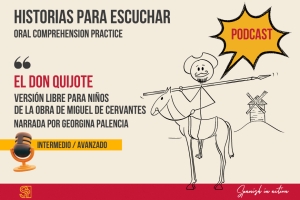By: Lucía Rodríguez.
The process of learning a new language varies considerably between children and adults. In particular, the acquisition of Spanish, a rich and diverse language, presents notable differences in these two demographic groups. We will explore the key distinctions that influence learning Spanish in both children and adults.
- Cognitive Flexibility:
Children are known for their incredible cognitive flexibility, meaning they can easily assimilate new linguistic structures. They have a natural ability to imitate sounds and linguistic patterns, facilitating the pronunciation and intonation of Spanish.
On the other hand, adults, while possessing more developed reasoning, may face challenges in adapting to new sounds and linguistic patterns. However, their ability to comprehend complex grammatical rules may be superior to that of children.
- Natural Immersion:
Children often learn a language through natural immersion in their environment. They are surrounded by native speakers and learn contextually, allowing them to acquire the language organically. Repetition and daily interaction significantly contribute to their progress.
Adults, on the other hand, often seek more structured and conscious learning methods. They may rely more on formal educational resources and classes, which can affect natural immersion and instinctive language acquisition.
- Inhibitions and Fear of Error:
Children tend to be more carefree when making mistakes. Their lack of inhibitions allows them to experiment and correct without fear, facilitating the acquisition of Spanish. Self-awareness about errors is lower in children, promoting a more relaxed learning environment.
Adults, on the other hand, often face fear of ridicule or error, which can affect their confidence in speaking Spanish. Overcoming these inhibitions is crucial for effective learning in adulthood.
- Motivation and Purpose:
Motivation varies between children and adults. Children often learn for social and practical reasons, such as communicating with friends or family. Adults, on the other hand, may have more specific goals, such as professional purposes or integration into a Spanish-speaking community.
Adult motivation based on specific purposes can be a powerful drive to learn Spanish, but it can also lead to a more formal and less organic approach.
- Grammatical Awareness:
As children acquire Spanish, their initial focus tends to be more communicative than grammatical. Understanding grammatical rules develops gradually as they progress in their learning.
Adults, with their more advanced cognitive abilities, can directly address grammar and comprehend complex linguistic structures. However, this approach often results in greater self-awareness, affecting natural fluency.
In summary, the differences in acquiring Spanish between children and adults highlight the importance of adapting teaching approaches based on age and individual characteristics. Both groups have unique advantages and challenges, and understanding these differences is essential to facilitate effective and rewarding learning of Spanish.



